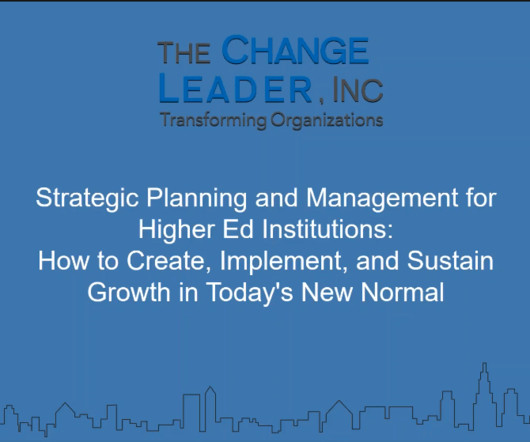Michelle’s Emerging #SAPro Journey – Reflections from Both Sides of the #SASearch
The Student Affairs Collective
MARCH 29, 2018
(Credit Image: © Nicolaus Czarnecki/ZUMA24.com). This semester, I’m helping my boss fire me. That sentiment is a little less scary than it could be, considering I’m a second year graduate student approaching graduation! And now that I’m involved in the selection process for the next graduate assistant who will fill my role, it has been nice to see things from the other side of table.





















Let's personalize your content